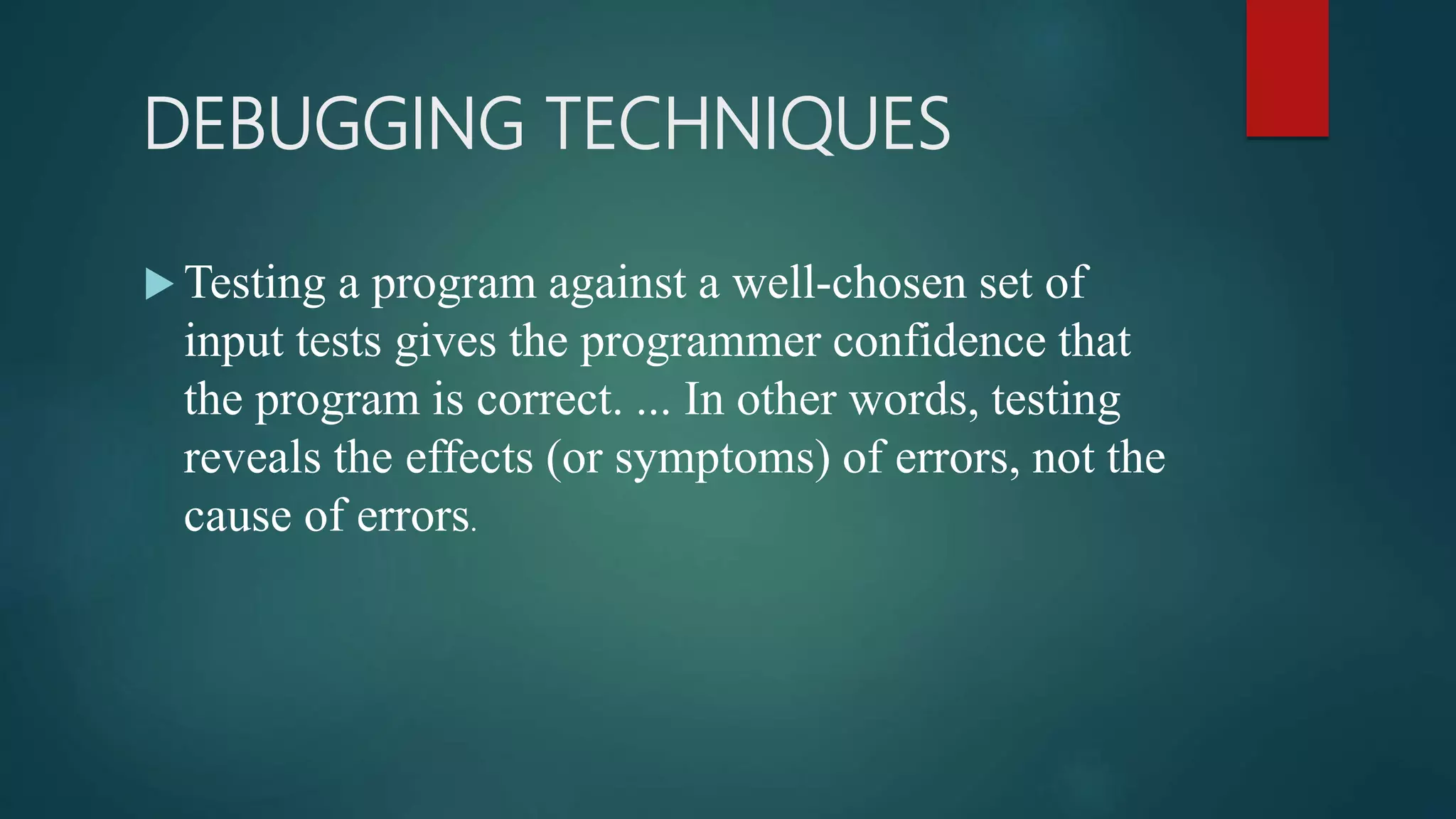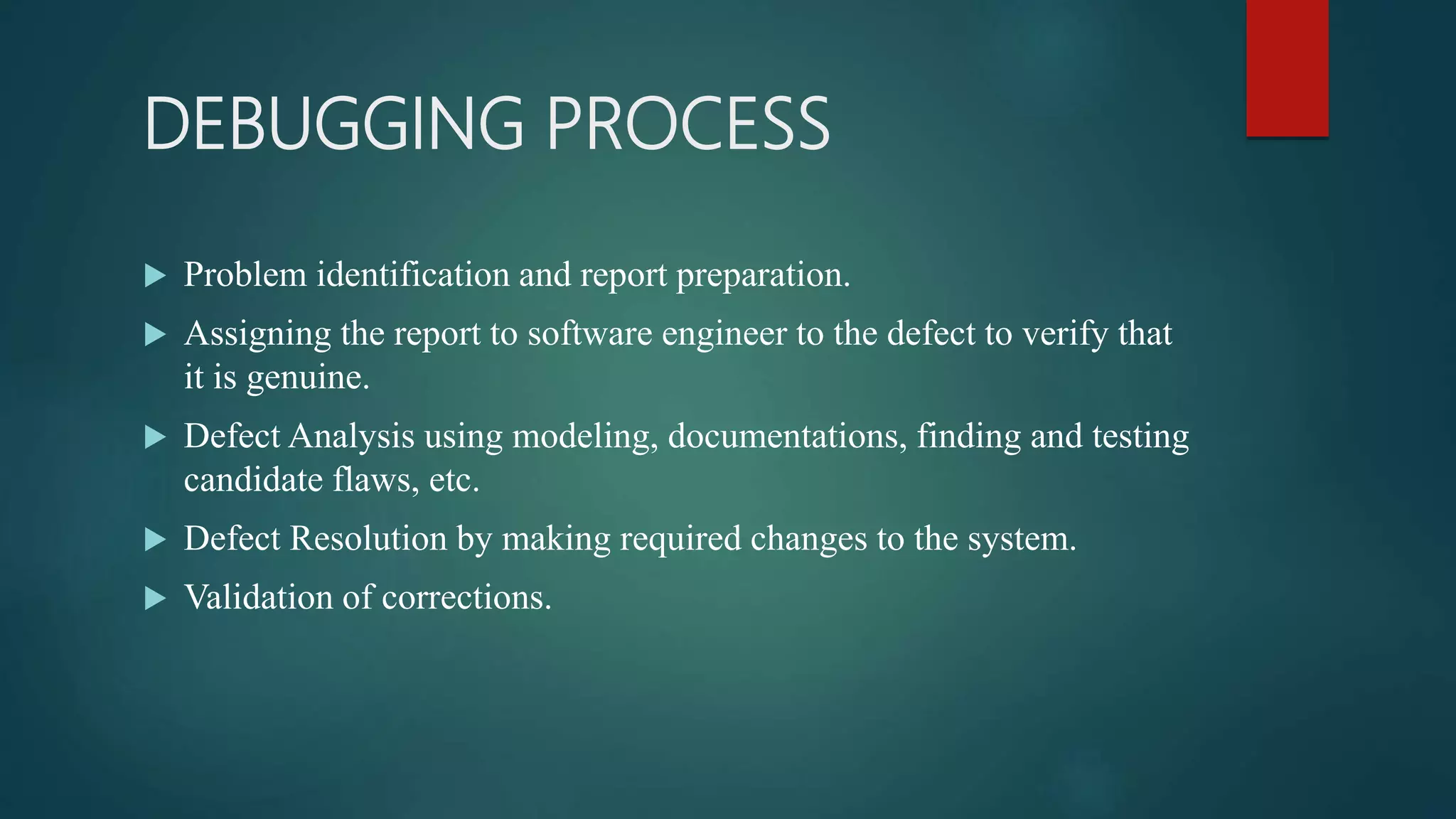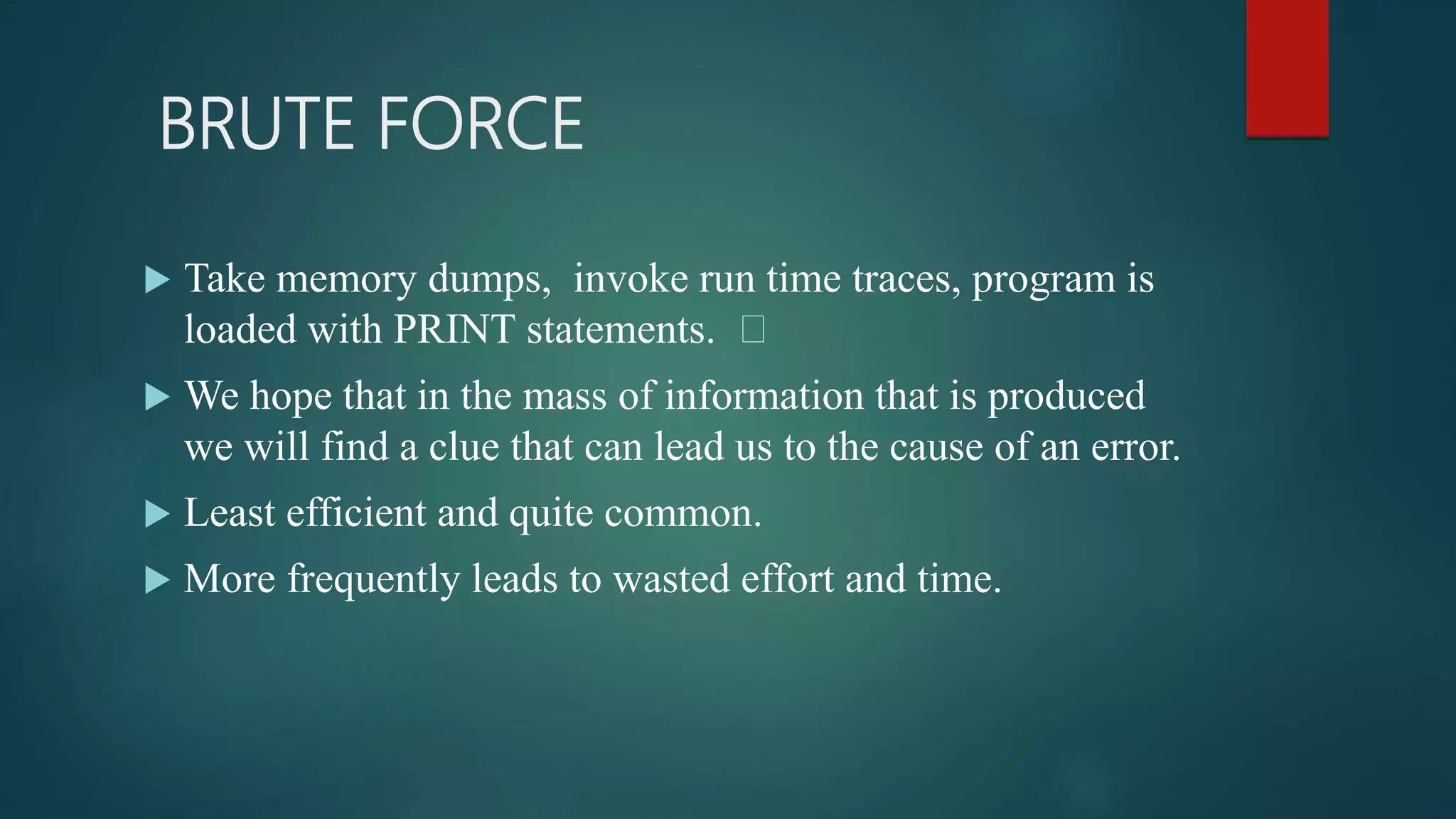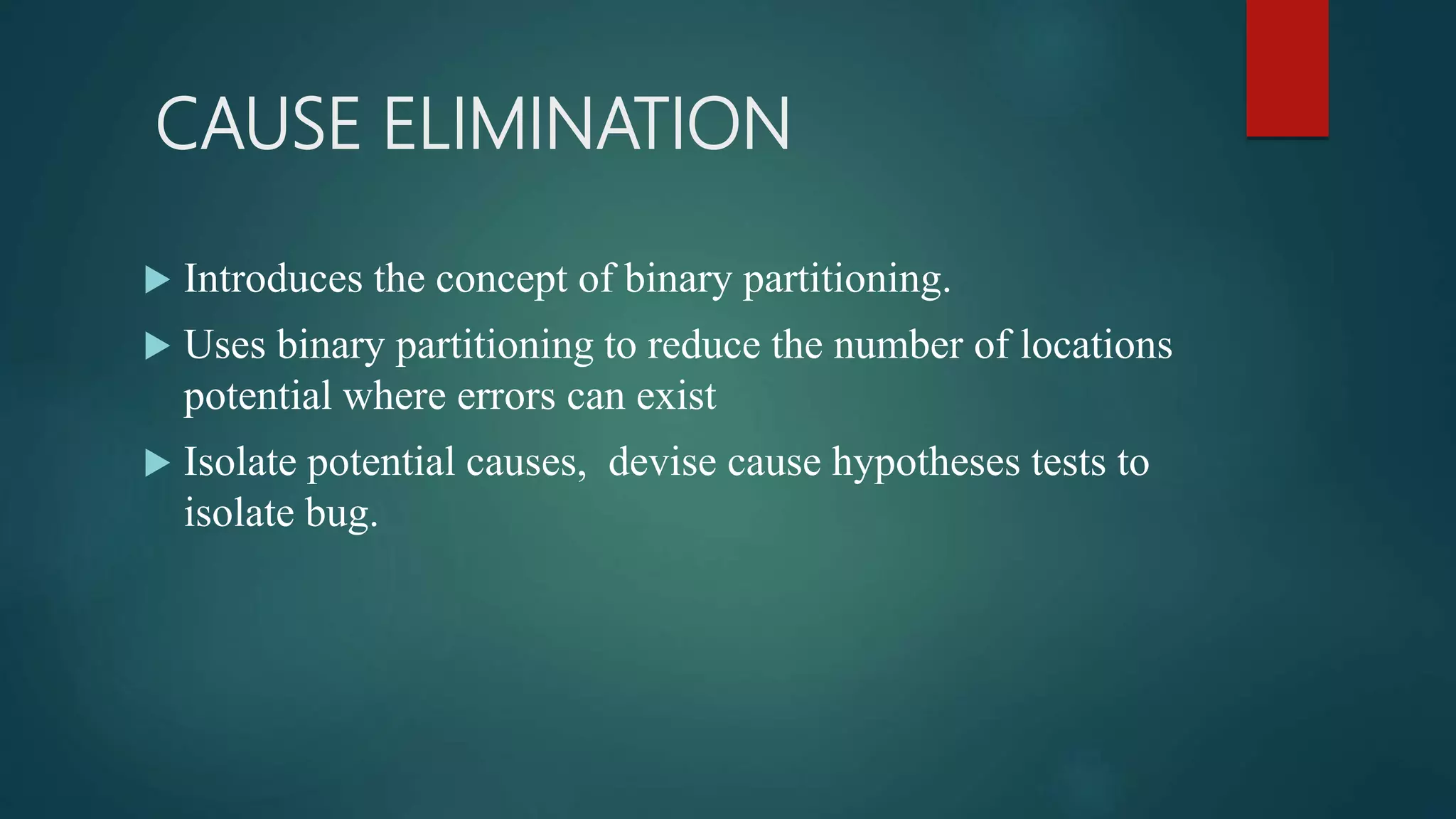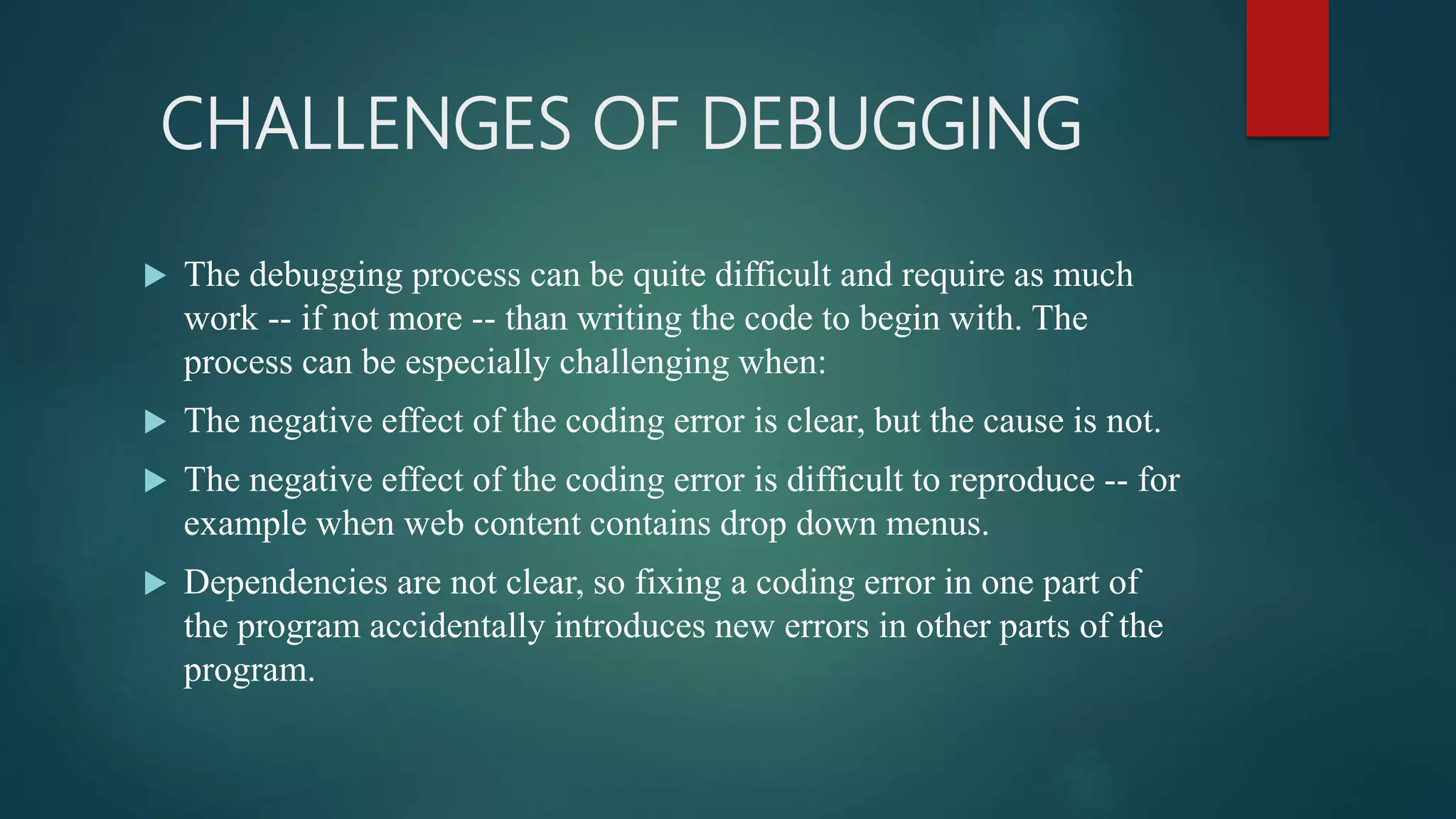This document discusses debugging techniques for software testing. It defines debugging as locating and removing errors in computer programs. The debugging process involves problem identification, defect analysis, resolution, and validation. There are three main debugging approaches: brute force using prints and traces, backtracking by manually tracing code backwards, and cause elimination which uses binary partitioning to isolate potential causes. Challenges in debugging include identifying the cause when only the effect is clear, reproducing errors, and dependencies introducing new bugs.


